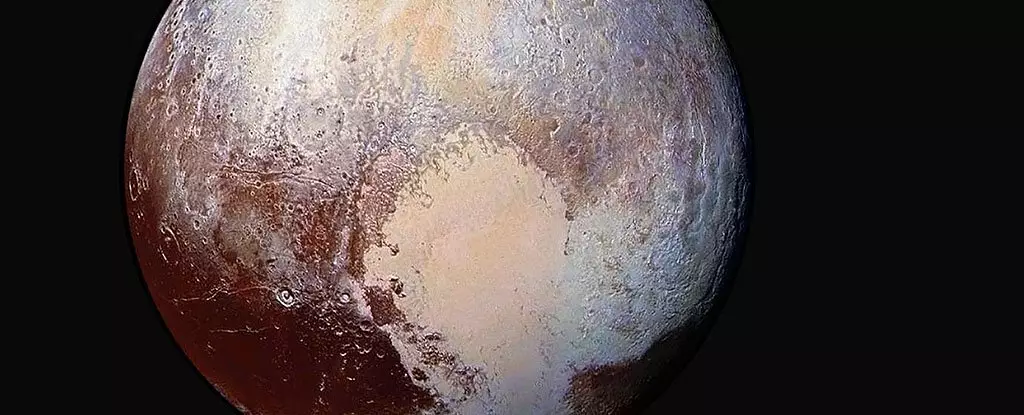Pluto, the dwarf planet at the edge of our solar system, is renowned for its distinct feature known as the “heart,” scientifically termed as Tombaugh Regio. This heart-shaped region on Pluto has puzzled researchers for years, with its relatively bright appearance standing out against the icy landscape. The formation of this heart is shrouded in mystery, but a recent study has shed light on a possible scenario involving a primordial collision with a planetary body that was around 400 miles wide.
According to the study published in Nature Astronomy, researchers from the University of Bern in Switzerland and the University of Arizona conducted computer simulations to replicate the dynamics of the impact that created Pluto’s heart. The simulations pointed to a scenario referred to as the “splat,” where a 400-mile-wide object composed of 15% rock collided with Pluto at a low velocity and a 30-degree angle. This collision led to the formation of a teardrop-shaped region known as Sputnik Planitia, which is the western half of the heart.
Interestingly, the study challenges previous theories that proposed the existence of a deep subsurface ocean on Pluto. The researchers behind the study suggest that the formation of the heart does not rely on the presence of an ocean beneath Pluto’s surface. This revelation could potentially rewrite the history of Pluto’s geological evolution and open up new possibilities for understanding the planet’s early history.
Implications for Kuiper Belt Objects
The findings of the study have implications beyond Pluto, extending to other objects in the Kuiper Belt. This ring of icy worlds that surrounds our solar system may have experienced similar impact events that shaped their surface features. By studying Pluto’s history, scientists can gain insights into the geological processes that have shaped other objects in the Kuiper Belt.
Continuing the Exploration
As researchers delve deeper into understanding Pluto’s history, the New Horizons spacecraft continues its journey through the outer regions of the solar system. Nearly nine years after its historic flyby of Pluto, the spacecraft has detected unexpected levels of interplanetary dust, hinting at the presence of unknown phenomena in the Kuiper Belt. Mission scientists are eager to identify new targets for exploration in the late 2020s or 2030s, showcasing the ongoing quest to unravel the mysteries of our cosmic neighborhood.
The study on Pluto’s heart provides a fascinating glimpse into the complex geological history of this distant world. By unraveling the mysteries of how the heart-shaped region formed, scientists are not only gaining valuable insights into Pluto’s past but also paving the way for a better understanding of other celestial bodies in the Kuiper Belt. The ongoing exploration of the outer solar system promises to unveil new revelations about the origins and evolution of our cosmic neighborhood, fueling curiosity and discovery in the realm of planetary science.


Leave a Reply